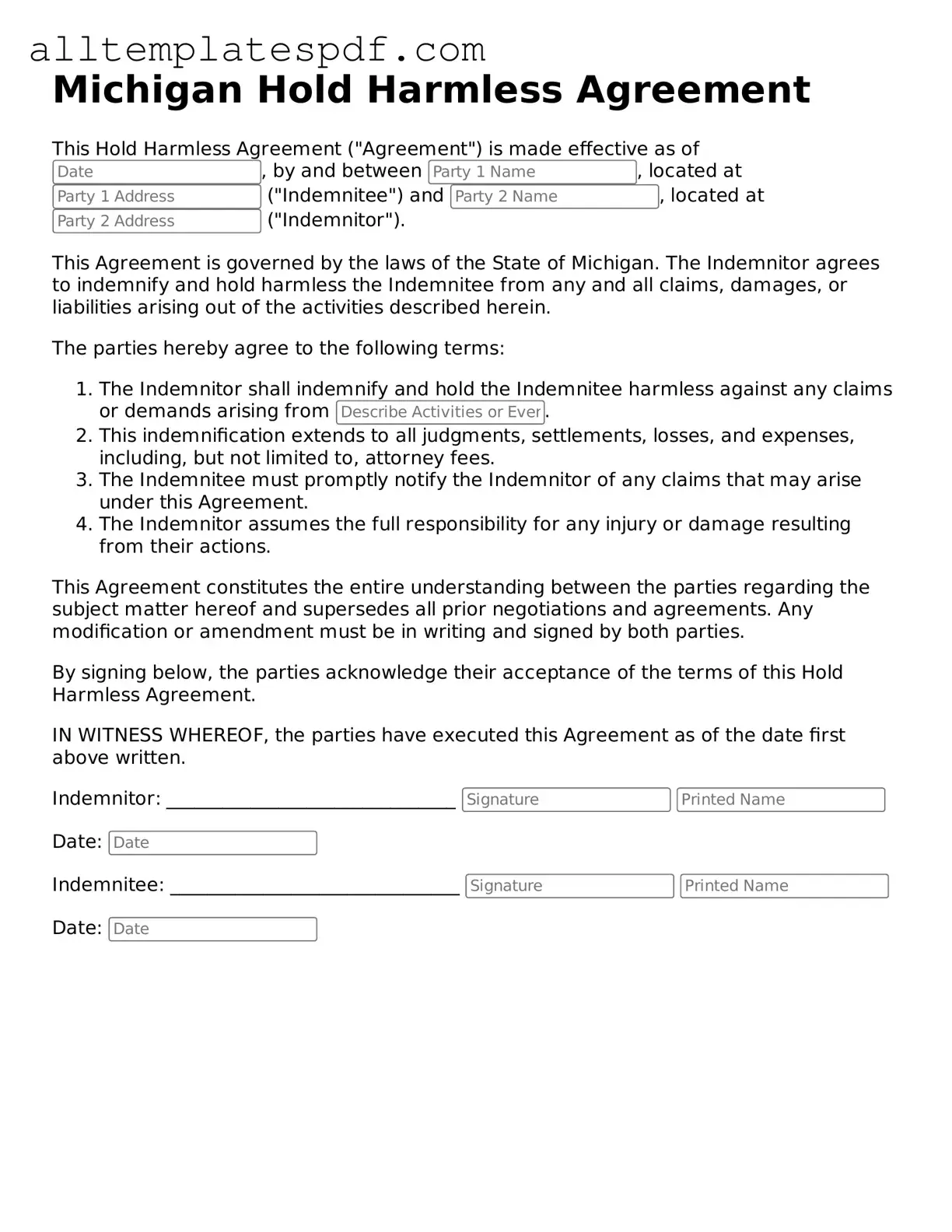Filling out the Michigan Hold Harmless Agreement form can seem straightforward, but many people make common mistakes that can lead to confusion or legal issues. One of the most frequent errors is failing to read the entire document thoroughly. Skimming through the agreement can result in overlooking important clauses that outline responsibilities and liabilities.
Another mistake often made is not providing complete information. Individuals may leave out essential details, such as names, addresses, or dates. This omission can render the agreement invalid, as it may not clearly identify the parties involved. Always ensure that all sections are filled out completely and accurately.
Many people forget to sign the document. A signature is crucial, as it indicates that all parties agree to the terms outlined in the agreement. Without a signature, the form lacks legal binding power. Additionally, some individuals may not date the agreement, which can create ambiguity regarding when the agreement was established.
Misunderstanding the scope of the agreement is another common pitfall. Some people may assume that the Hold Harmless Agreement protects them from all liability, but this is not always the case. It’s important to understand the specific protections offered and any limitations that may apply.
Another frequent error is not consulting with a legal professional. While it’s possible to fill out the form independently, seeking advice from someone knowledgeable can help clarify any confusing terms and ensure that the agreement meets legal standards.
In addition, people often neglect to keep a copy of the completed agreement for their records. Having a copy is essential for reference in case any disputes arise in the future. Without it, individuals may find themselves in a difficult position if questions about the agreement come up later.
Some individuals fail to consider the implications of the agreement on their insurance policies. It’s wise to review insurance coverage before signing the agreement, as certain clauses may affect liability coverage. Understanding how the agreement interacts with existing policies can prevent unexpected financial burdens.
Additionally, failing to clarify terms and conditions can lead to misunderstandings. If any part of the agreement is unclear, it’s important to ask questions before signing. Misinterpretations can result in unintended consequences down the line.
Lastly, some people may not take the time to discuss the agreement with all parties involved. Open communication is key to ensuring everyone understands their rights and responsibilities. Engaging in dialogue can help prevent future conflicts and foster a cooperative atmosphere.
